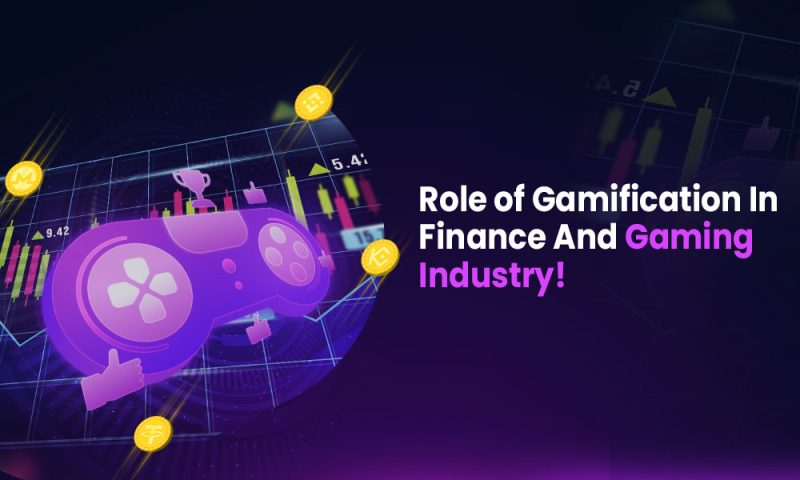It is challenging to make gaming and financial services intriguing. Fintech and gaming, like businesses in many industries, are attempting to increase user engagement through modern technologies.
Banks and gaming businesses are aware of the need to develop new methods of engagement with their clientele to remain competitive and foster loyalty in a field that is becoming increasingly competitive.
Could gamification be the key to achieving more engagement? It remains an unsettling question because today’s consumers are seldom far from their smartphones and seamlessly switch between digital platforms.
But what exactly is gamification? How is it transforming the gaming and financial industry?
In today’s blog, we’ll discuss all gamification in the gaming and finance industry.
Gamification: Quick Overview
Gamification refers to the incorporation of game-playing features into environments that are not gaming-related so that social media users can receive incentives.
Through gamification, businesses can gain more information about user behavior and an insightful understanding of their actions. This data is a part of the significant data stream that can assist companies in identifying new marketing opportunities and enhancing operational procedures.
As per the reports, by 2028, the size of the global gamification industry is projected to reach $58.8 billion, growing at a CAGR of 26.8% between 2022 and 2028.
How Is Gamification Transforming The Financial Industry?
Gamification incorporates game elements into contexts that are not gaming, like financial services, to increase user engagement.
Using gaming ideas akin to interactive games, gamification in finance means turning everyday financial operations into milestone-based tasks and reward-type activities that are also streamlined and exciting.
The general public usually needs help understanding financial concepts like debt, investments, and inflation. Gamification of finance can increase client financial literacy, streamline banking processes, and increase awareness of financial topics. Games and quizzes can be utilized to delve deeper into a subject. As a result, clients may decide on their bank accounts with more excellent knowledge.
How Is Gamification Transforming The Gaming Industry?
Blockchain technology is used in gaming gamification, which uses standard gaming components like point scoring, rivalry, and rules of engagement. The most popular term is GameFi, a combination of the words “Game” and “Finance.” It discusses gamifying financial systems so players can earn cryptocurrency by engaging in play-to-earn games.
The distributed ledger used by GameFi to power its video game projects allows users to have verified ownership of the in-game digital products. GameFi initiatives use a play-to-earn approach instead of conventional gaming, where players play to win. Thanks to their vast usability and blockchain properties, players can use them in games as characters, commodities, special abilities, and other marketable products.
The ecosystem of traditional gaming, which consists of resources, environments, characters, weaponry, and more, is absent from other game genres. On the other hand, interoperability is a feature of blockchain-based games, allowing players to use their distinctive gaming assets across different games.
What Challenges Does Crypto Gamification Solve For Crypto Investors?
As a new money source for players and investors, the GameFi business is expected to expand rapidly. Nearly half of all active crypto wallets were linked to games by the end of 2022 when about 70 new crypto games went live. This is an excellent indication of how huge GameFi is and could get in the future.
Holding in-game assets outside the game is a significant advantage for investors and gamers. The non-fungible tokens created may have other uses for game producers, including resale commissions, revenue-sharing from other platforms, and improved market user awareness.
Playing video games is a common pastime. Players conduct microtransactions daily, and these transactions demand payment gateway integration. All of the inefficiencies and costs of conventional financing are present in these gateways. Blockchain technology has the potential to lower or eliminate these costs.
By providing possible incentives, GameFi crypto games enable a play-to-earn rewards system that has helped game developers to lower the perceived cost of playing crypto games. Their target audience has grown as the outcome of the scenario.
Whatever in-game assets you acquire or earn as players remain in your cryptocurrency wallet as assets. The things you make in video games are also NFTs.
Top Trend Of Defi In the Gaming Sector
Game Monetization is the top trend of Defi in the gaming industry.
As more people turn to entertainment, players and game creators are looking for effective ways to monetize the gaming sector. This money generation may be made possible through blockchain games, such as decentralized online video games, by completing in-game objectives and players “mine” tokens.
Blockchain gaming refers to playing video games hosted on a blockchain instead of a centralized server. Through in-game chores, players “mine” tokens. Popular Defi protocols are needed for in-game transferability, and many players will presumably wish to profit from their in-game cryptocurrency investments.
Blockchain tokens that link these in-game assets allow gamers to trade them across various Blockchain-based game marketplaces.
Using Blockchain to create open, decentralized, and transparent ecosystems results in a fair experience. The players control what happens in the game and vote to change it. The experience for others won’t be harmed by cheats either.
Conclusion
Over the past year, part of the crypto ecosystem has experienced phenomenal growth. Possibly even more than the cryptocurrency itself.
The emphasis on greater efficiency is one factor that connects several of these themes. Gamification is growing in popularity in the finance and gaming sectors as it continues to provide users with an immersive and highly engaging experience.




